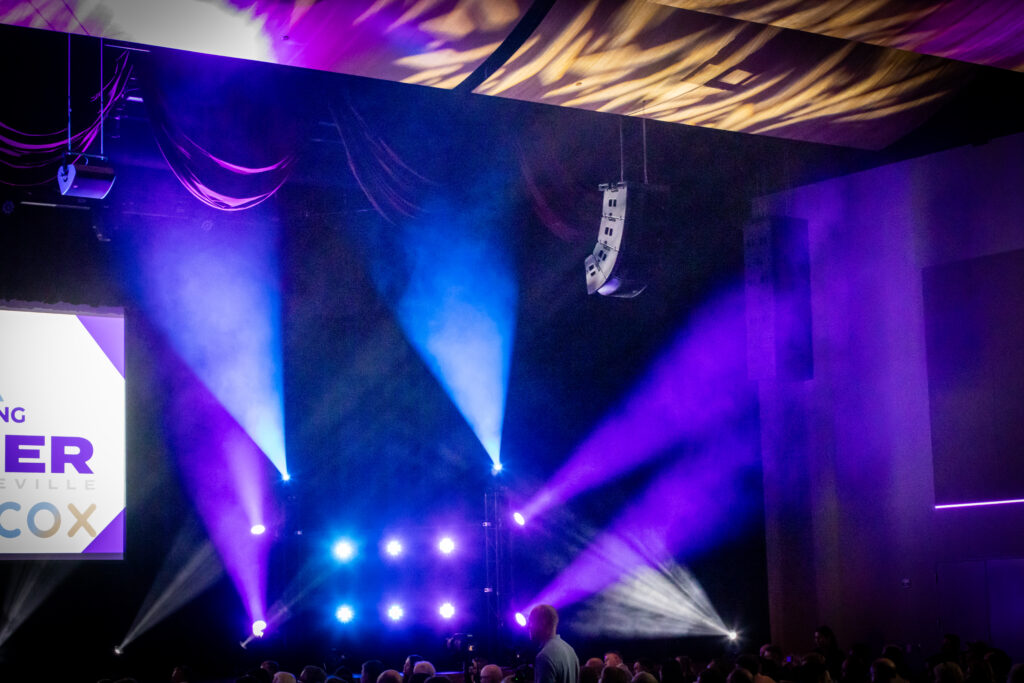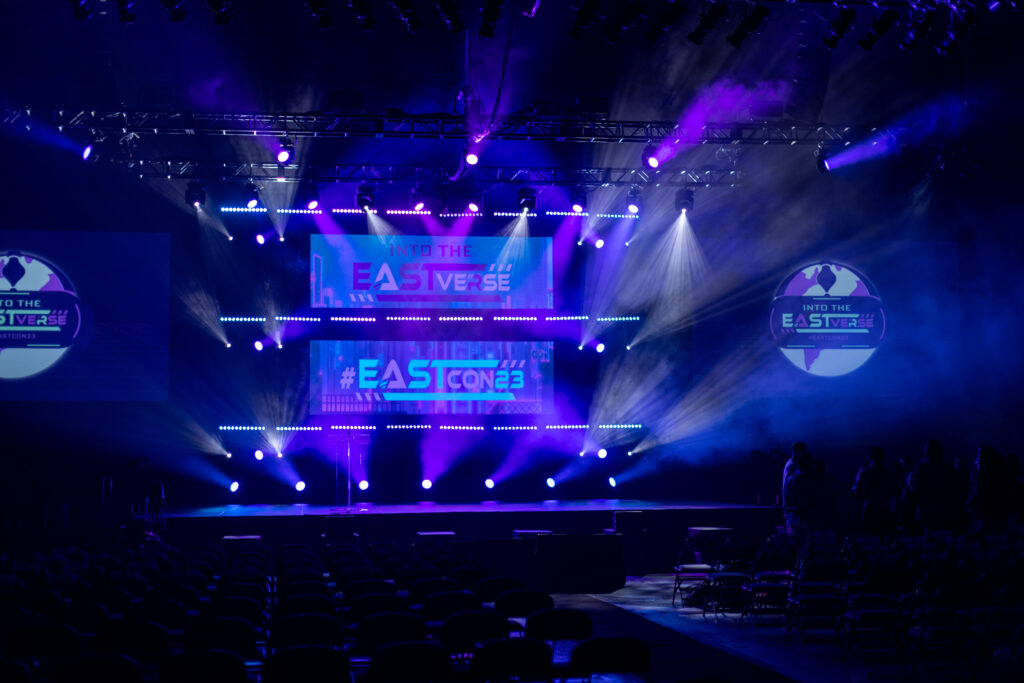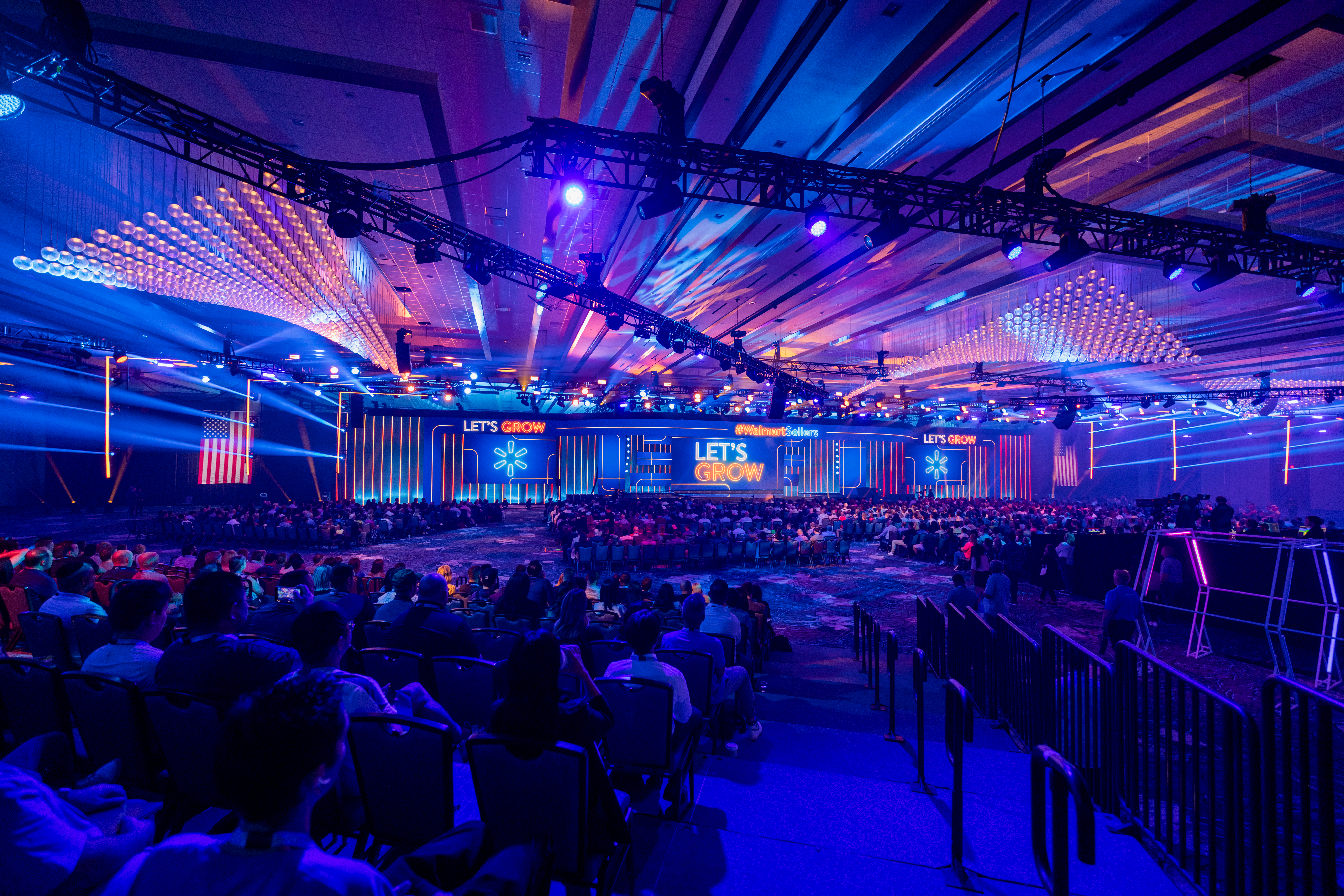In stage lighting, it’s easy to get excited about the dramatic, the dynamic — moving lights, color-changing fixtures, vivid LED screens. But there’s a subtle, often-overlooked decision that quietly shapes the entire visual experience of your event: the house lighting.
Before we touch a single lighting console or raise a single truss, we begin every show with one simple question:
What are we doing with the house lights?
Control What You Can, Accept What You Can’t
Every good photographer knows there’s one light source you simply can’t control: the sun. You can balance around it, diffuse it, compete with it — but you can’t change it.
House lighting in most venues is the same. You often have minimal control. Maybe the venue offers basic presets: on, off, and a middle ground. Rarely do you get full dimming or color temperature control.
So just like outdoor photography starts with the sun, indoor event lighting starts with the house lights. Not the flashiest part of the rig — but the most foundational.
Light Has Two Properties: Brightness and Color
Whether it’s sunlight, candlelight, or LED light, all light has two basic characteristics:
- Brightness – How intense the light is.
- Color Temperature – How warm (amber) or cool (blue) the light feels.
House lights typically lean warm. Think amber, halogen tones. Production lighting, by contrast, can be adjusted to nearly any color temperature.
At avad3, we often use variable color temperature fixtures so we can match — or contrast — house lights intentionally. But if you don’t take house light color into account, your stage can look mismatched. It’s like trying to photograph a person under warm house lights with a bright blue LED behind them — jarring and unflattering.

The Real Budget Reality: You Can’t Just Override Everything
Sure, on high-budget events, we can ignore the house lights completely. We can rig enough production lighting to overpower the room and wash every surface with custom looks. In those cases, we may not even turn the house lights on.
But that’s not most events.
Most events — and most planners — are working within a realistic budget. And in that world, the house lights are part of the scene. Which means you need to plan around them, not pretend they’re not there.

Sequence Matters: Start with What You Can’t Control
Here’s the order we use when building a lighting look for an event:
- House Lighting Color and Brightness
These are often fixed or limited. Start here. - Stage Face Light (Wash)
Next, match (or strategically contrast) your front light to the room. - Color and Accent Lighting
Add environmental or creative lighting that complements the base. - Screens and Projection Brightness
LED walls or projectors need to be balanced so they don’t overpower. - Camera Settings
White balance and iris settings should be the final step, once everything else is set.
Going out of order — for example, dialing in face light first — often results in blown-out stages and unreadable screens, especially in audience photos taken from the back of the room.
Don’t Forget the Audience’s Camera: It’s Not Just Yours
Even if your event has a professional camera crew, you can’t control where audience members take photos from — or what device they use. Most of your event’s photos will come from attendee smartphones. Some will be shared on internal Slack channels, others on LinkedIn, some may make it into a company recap deck.
Lighting that looks great from row one might look blown out from row twenty-five.
If your room is dark and your stage is extremely bright, smartphone cameras — especially in wide shots — will struggle to capture the scene. The result? Your stage looks like a glowing orb. Your beautiful screen content? Gone. Sponsor logo? Washed out. Brand impact? Lost.
Setting house light levels first gives you a baseline. It ensures that your attendees — wherever they’re sitting — get a well-balanced view.

Match the Mood to the Moment
Another reason house lights matter? They set the mood.
- Trade show floor at 10am? Bright and energized.
- Evening gala at 8pm? Dim and elegant.
- VIP reception during golden hour? Somewhere in between.
Sometimes, one room needs to shift between all three across a single event. That’s fine — but those shifts need to be planned. House lights are the easiest lever to pull for mood changes, if they’re available to you.

Excellence Is a Process
A great AV company should know all of this already. Ideally, your production partner is walking you through this process — asking the right questions, setting the right looks. You shouldn’t have to think about lighting levels at this depth.
We believe you deserve to know what excellence looks like — and how to ask for it. Because excellence isn’t an accident. It’s a process.
And in event lighting, the first step in that process onsite is setting the house lights.











